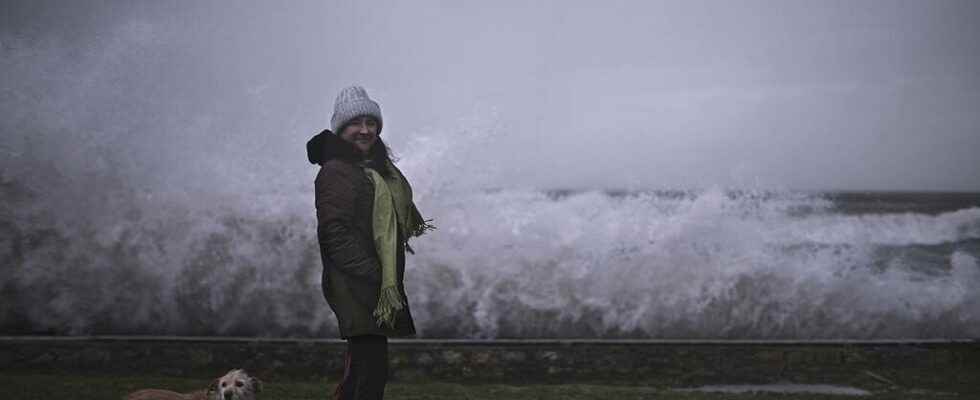” What I have passed on to my daughter is the relationship to nature and art, not being a foreign body with one or the other. These are the kinds of sentences that we can hear from Cécile Borne, when we ask her about the meaning of her travels, her work and her life.
The first thing you see of it is an axis. Cécile is not very tall, but she always stands up straight. His deep and deep laugh, a throaty laugh, is a curious mixture of absolute benevolence and quiet circumspection, a Rorschach butterfly where everyone can come and find a burst of wisdom, the key to their own appeasement.
She was born in the early 1960s in a small village at the end of the bay of Douarnenez, between the countryside and the sea, lulled by the sound of the surf, which we could hear very well, she remembers, when the window was open, from his childhood bedroom. With her mother, she discovered the theatrical utopias of the 1970s, the Living Theatre, the Sun Theater, the Bread and Puppet and the Odin Teatret. She did internships with Augusto Boal of the Théâtre de l’opprimé.
Fly away to better anchor
His father takes him to the Festou Noz, popular Breton balls, and the child that she is mixes with the adults, amazed at reproducing effortlessly the steps of the gavotte or the rounds. At 8 years old, she started classical dance. Her parents find it bourgeois and to tell the truth, it’s not for her either the great love, this body which shows itself instead of looking for itself, which peaks to get out of the ground when she dreams of being chthonic, firmly planted on both feet.
And then this daughter of teachers, fed with Freinet pedagogy, does not really like managers, and school even less: “ High school was a nightmare. At 18, she left for London, also in the footsteps of an aunt who left too young. She is an au pair, to pay for her contemporary dance lessons. A year later, she returned to do “pla arts” in Paris.
With Jérôme Thomas, she set up the GR 12, a research group dedicated to new choreographies. She continues her travels, in Canada, in Budapest, in Berlin. She discovers Eastern Europe before and after the fall of the Wall. And this time, his choreographies rise, but really. By introducing the use of the trapeze and aerobatics, it flies away to better anchor itself.
The little ball lost
Then it’s the 180 degree turn, the romantic and professional breakup, the return to Finistère. In Langonnet, in central Brittany – Argoat in Breton – she bought an old café, hotel, restaurant, ballroom, banquet hall, which no one wanted anymore. She founded a family there and La Grande Boutique, a place where everything that brings her to life, dance, music, plastic arts, encounters, comes together.
She stayed there for thirteen years before returning to Douarnenez where she lives today. She rediscovers the beaches of her childhood, gleaning from the leash fragments of fabrics and objects that her peers have thrown into the sea, by choice or by accident. “ The abandoned fragments sometimes told me more than the beautiful local monument she smiles.
Over the course of her rounds, she had got into the habit of pasting fragments found here and there on cut-out cardboard, which she then sent like so many postcards. ” I continued these assemblages, these collages, but it grew suddenly. The gesture was there, for a long time. These fragments, she stages them, like a motionless, silent theatre. And she always asks herself the question of their origin, tracking down clues that can take her very far, until she meets the people to whom, one day, they belonged.
The taste for detail
“ There is in this work a mixture of memory and imagination. It seems to come from the same part of the brain. You have to hear her, during the guided tours she offers of her exhibitions, recount her works like a storyteller who has studied mythology and archeology. Just recently, she created a people, ” natives of the seventh continent “, with reference to this pile of plastic that the ocean carries and collects according to the currents. To stage it, she became an ethnologist, imagining the customs and rites of its inhabitants.
But the performing arts have not disappeared from its horizon. For seven years, with the Cercle celtique de Douarnenez, she has been experimenting at the crossroads of contemporary dance and traditional Breton dances. ” We are very few to know these two cultures. And among these happy coupleshe is the only one not to have chosen one or the other.
” My travels have taught me many things, but I’m very happy to be here “, she says. ” I like to work with things that people don’t know about. The important thing for me is the idea of gleaning. In addition to the dancer, visual artist and storyteller, there is a fine connoisseur of Breton nature on a daily basis. With her, you learn to make elderflower jam or wild garlic pesto, to cook a fish shunned by anglers, horse mackerel.
A stone’s throw from her home and her gallery, her garden shows itself in her image, suspended, a little hidden and filled with friends from here or passing through, covered with plants that do not hesitate to defy the rockery and coexist in perfect serenity. ” What really mattersshe concludes, it’s attention to detail, it’s taking the time to be attentive to others, to beings. »
For further :
